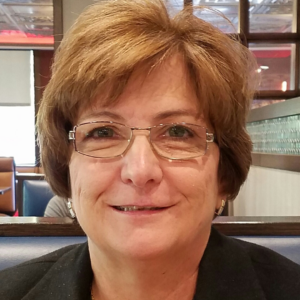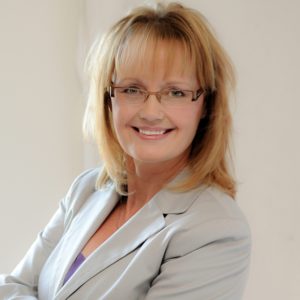2015 Business Outlook: Technology
Editor's Note: Senior housing and services providers will enter 2015 with many unanswered questions regarding their future. A new Republican majority in the U.S. Senate, an expanded Republican majority in the U.S. House of Representatives and the presence of Republican governors in more states will bring new perspectives to the political landscape. Controversial presidential executive orders related to immigration reform await resolution, and threatened governmental action could overturn some or all of the Affordable Care Act and the health insurance it provides to certain seniors and others. New payment models and regulations under consideration could alter the business climate for years to come. In this multi-part series, Long-Term Living takes a look at some of the top issues that those who serve older adults will face in the new year. This is part six. See the entire series here, or see the digital edition of the December 2014 issue for the print version of these and related articles.
The Office of the National Coordinator for Health Information Technology’s Nov. 13 publication of “Health IT Enabled Quality Improvement: A Vision to Achieve Better Health and Health Care” and the Nov. 19 Centers for Medicare & Medicaid Services announcement of the creation of a new Office of Enterprise Data and Analytics to improve data collection and dissemination are two of the latest indicators of the federal government’s increasing emphasis on technology in the delivery of healthcare, including care provided for older adults.
 Among some providers of housing and care for seniors, however, use of some forms of technology—electronic health records (EHRs) and mobile devices—is low, at 17 percent, relative to use among acute-care providers, according to a 2013 National Center for Health Statistics (NCHS) data brief based on the 2010 National Survey of Residential Care Facilities (use was 28 percent among home health and hospice agencies in 2007, according to the NCHS). One major reason is that the federal Health Information and Technology for Economic and Clinical Health Act did not offer most nursing homes, assisted living and other long-term care providers the same incentives (or penalties) as were established for hospitals and physician practices to encourage adoption of the technology. But that doesn’t mean that use of the technology is any less important in settings in which older adults live and receive care, says Majd Alwan, PhD, senior vice president of technology for LeadingAge and executive director of its Center for Aging Services Technologies.
Among some providers of housing and care for seniors, however, use of some forms of technology—electronic health records (EHRs) and mobile devices—is low, at 17 percent, relative to use among acute-care providers, according to a 2013 National Center for Health Statistics (NCHS) data brief based on the 2010 National Survey of Residential Care Facilities (use was 28 percent among home health and hospice agencies in 2007, according to the NCHS). One major reason is that the federal Health Information and Technology for Economic and Clinical Health Act did not offer most nursing homes, assisted living and other long-term care providers the same incentives (or penalties) as were established for hospitals and physician practices to encourage adoption of the technology. But that doesn’t mean that use of the technology is any less important in settings in which older adults live and receive care, says Majd Alwan, PhD, senior vice president of technology for LeadingAge and executive director of its Center for Aging Services Technologies.
“I see the EHR as a foundational block that all long-term and post-acute care providers should have, and it should be [a] clearinghouse for all pertinent information about their residential clients or patients,” says Alwan, a member of Long-Term Living's editorial advisory board.
Beyond mere possession and use of such systems, he adds, interoperability and health information exchange remain top goals, especially as healthcare increasingly focuses on quality reporting and care coordination across the continuum and moves from a fee-for-service model to a value-based model.
In addition to EHRs, Alwan says, technology-related trends in the industry include tools that enable prevention rather than treatment, clinical decision support systems that help guide clinicians at the point of care, telehealth and remote vision monitoring to assist in the management of chronic conditions and facilitate aging in place, and technology that enables patients/residents to be more active in managing their own health. Increasingly, such technology is available in wireless and mobile offerings, he notes, and EHRs come equipped with interfaces for tablet computers and smartphones. “That trend is going to continue strongly,” Alwan says. The end result, he adds, will be “more connected providers, more connected professional caregivers and, hopefully, more connected patients or care recipients.”
 On top of the broad benefits realized by providers, technology can enable connectedness between residents and their loved ones as well as the delivery of more person-centered care, offering the potential for increased independence and dignity among those receiving care, says Maribeth Bersani, senior vice president for public policy and interim CEO of the Assisted Living Federation of America.
On top of the broad benefits realized by providers, technology can enable connectedness between residents and their loved ones as well as the delivery of more person-centered care, offering the potential for increased independence and dignity among those receiving care, says Maribeth Bersani, senior vice president for public policy and interim CEO of the Assisted Living Federation of America.
Bersani, a former executive director of an assisted living community, for instance, recalls that, formerly, cognitively impaired residents might have to wear bulky devices on their wrists that caused a door to lock or an alarm to sound if they attempted to leave the community. “Now, you can put a GPS mechanism in somebody’s shoe, or you can have wireless technology that alarms doors and secures perimeters,” she says, “so somebody doesn’t even know that they are wearing the device, or it looks like a watch, so somebody wouldn’t feel like they are wearing some undignified mechanical contraption.”
Also in this series:
2015 Business Outlook: Payment
2015 Business Outlook: Service Reach
2015 Business Outlook: Quality
2015 Business Outlook: Staffing
2015 Business Outlook: Professionalism
2015 Business Outlook: Important dates
Related content:
I Advance Senior Care is the industry-leading source for practical, in-depth, business-building, and resident care information for owners, executives, administrators, and directors of nursing at assisted living communities, skilled nursing facilities, post-acute facilities, and continuing care retirement communities. The I Advance Senior Care editorial team and industry experts provide market analysis, strategic direction, policy commentary, clinical best-practices, business management, and technology breakthroughs.
I Advance Senior Care is part of the Institute for the Advancement of Senior Care and published by Plain-English Health Care.
Related Articles
Topics: Articles , Executive Leadership , Technology & IT











